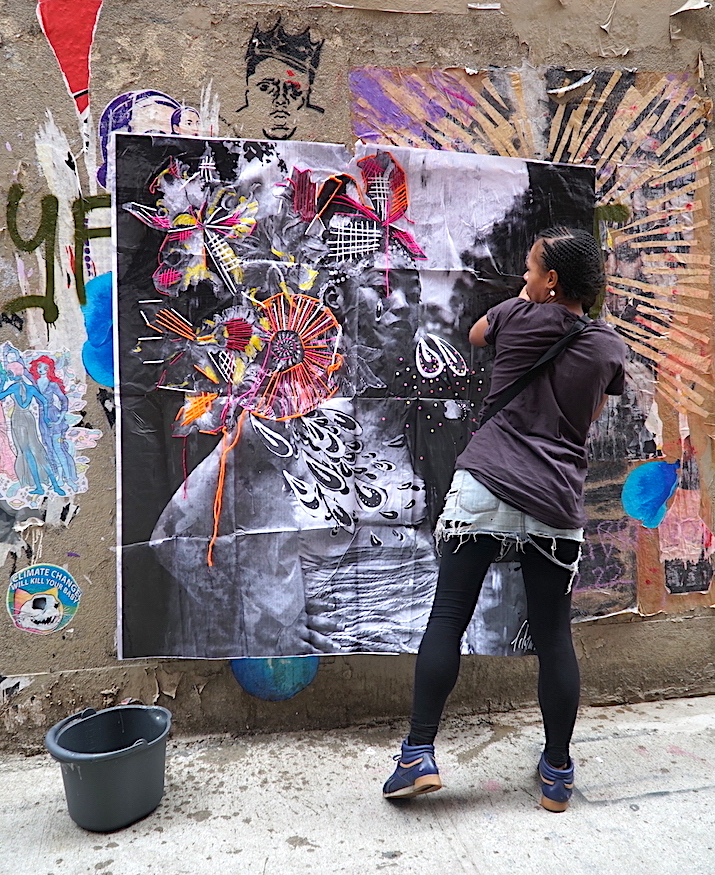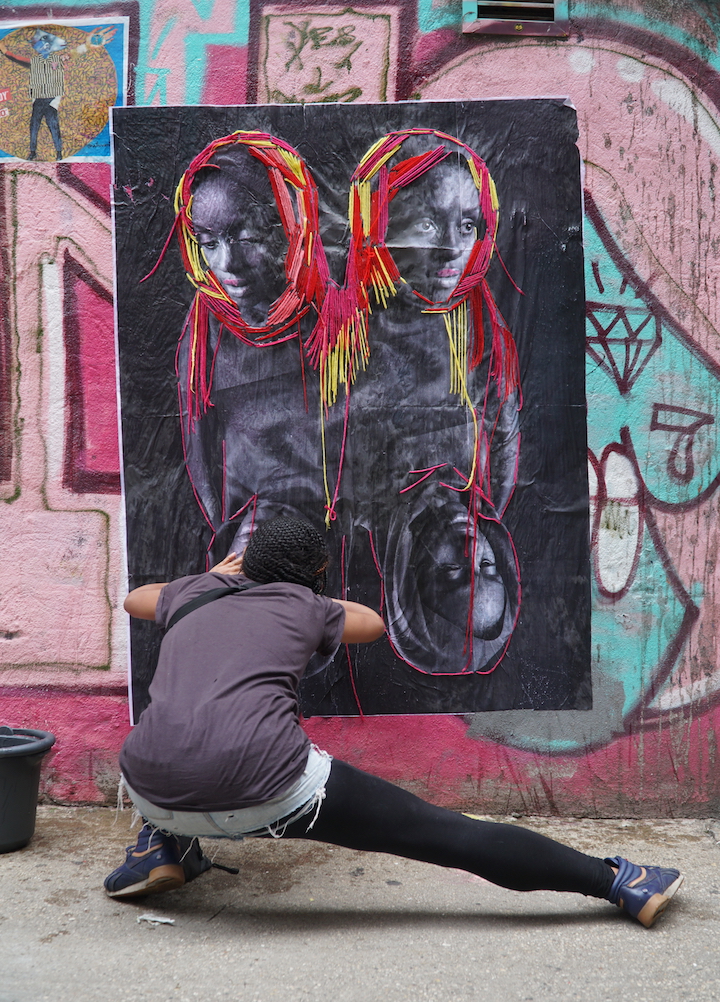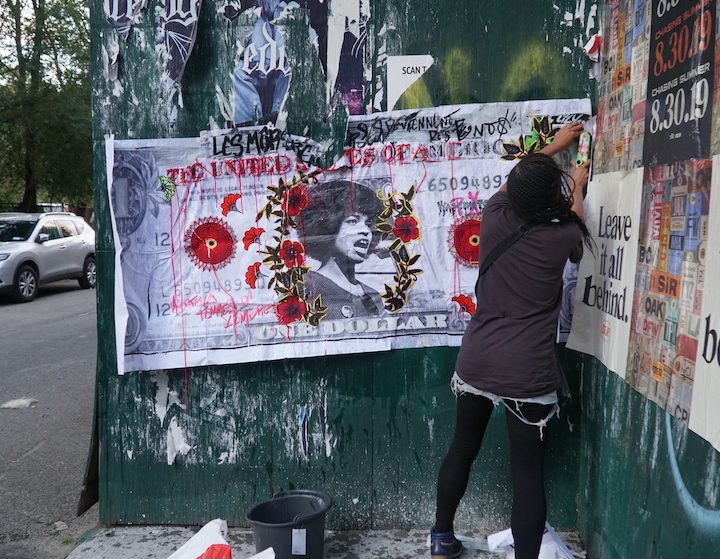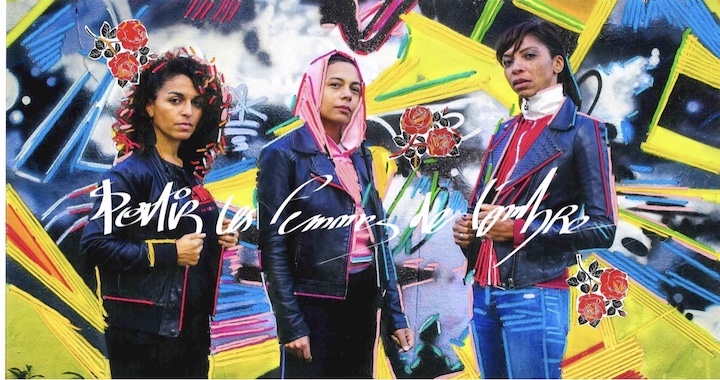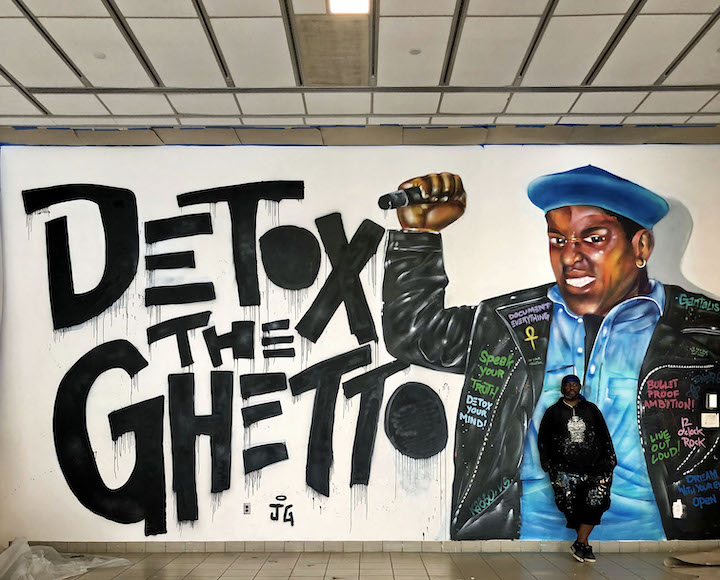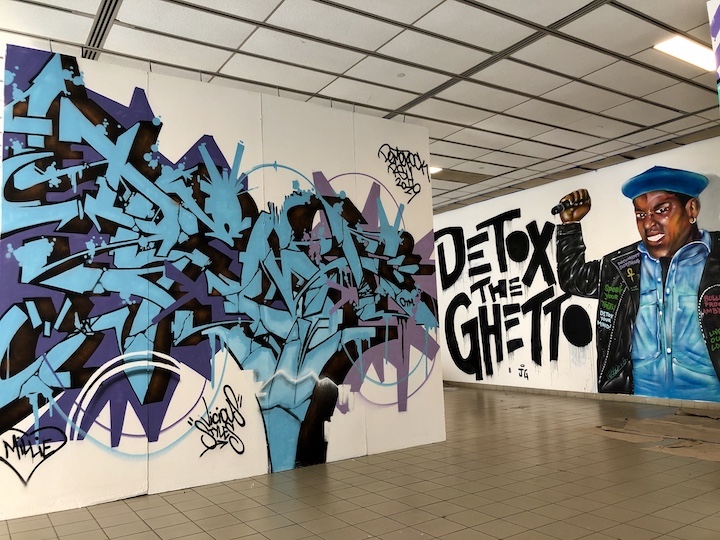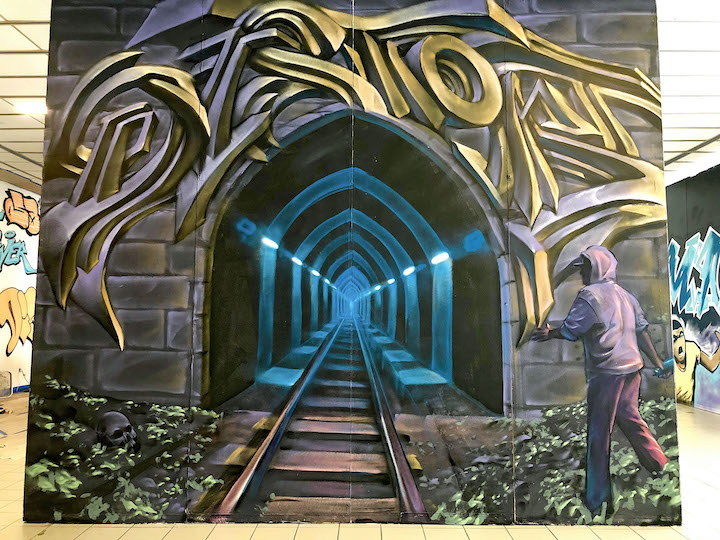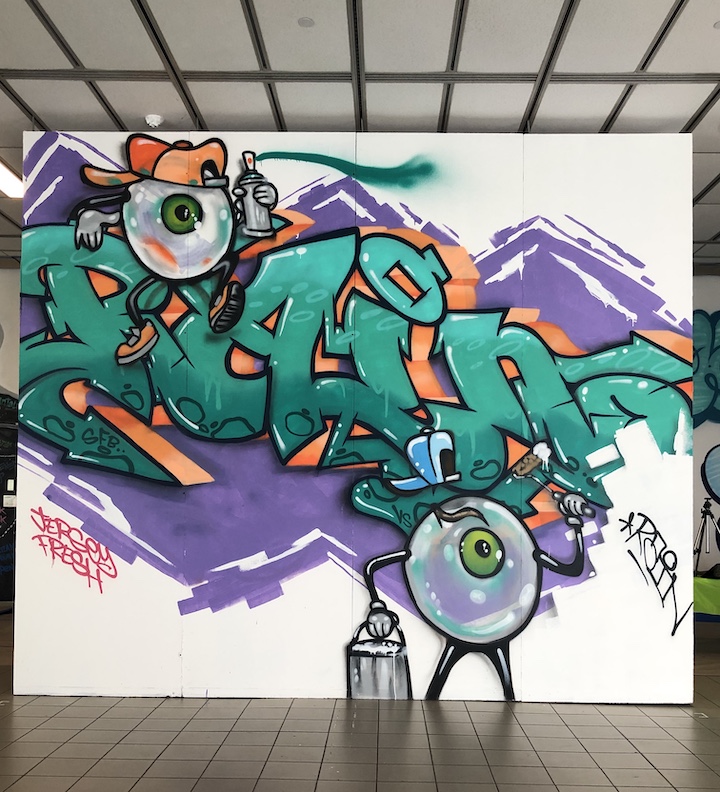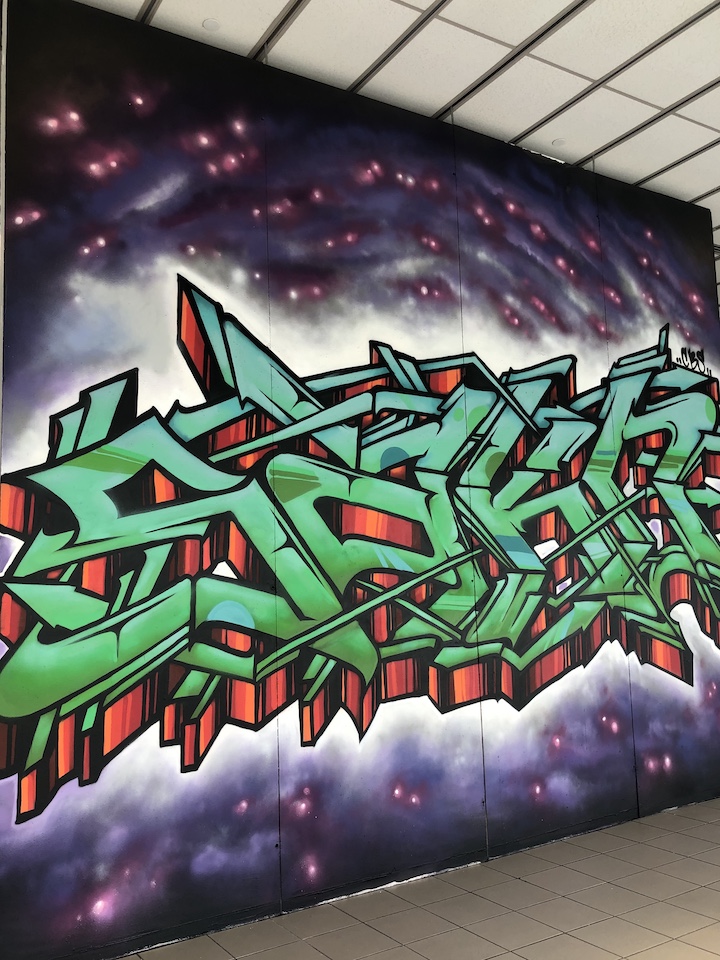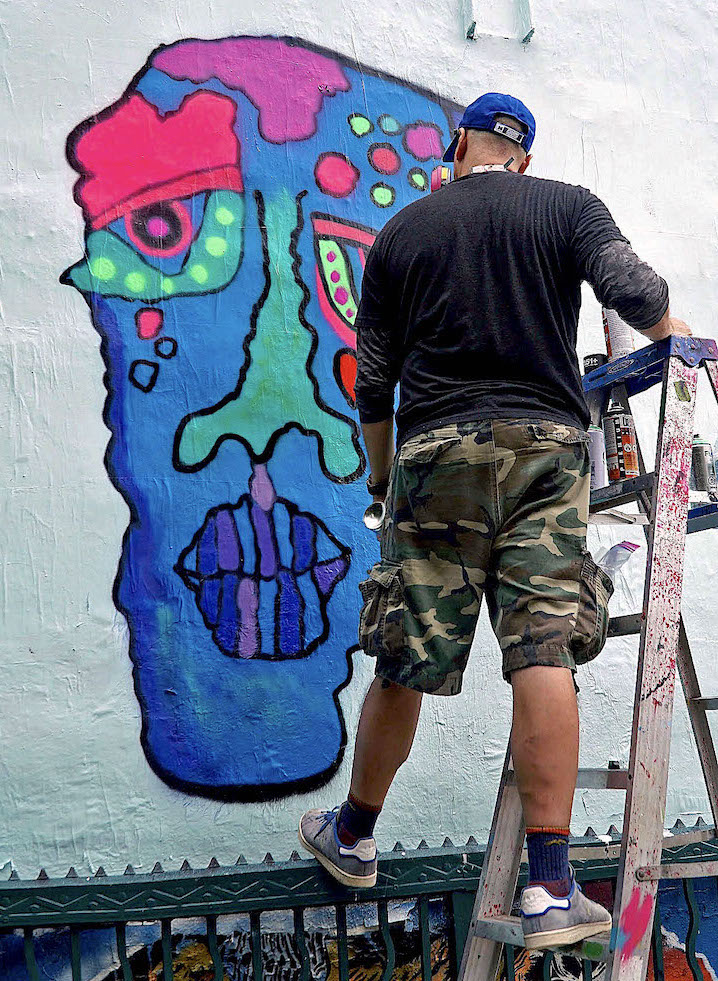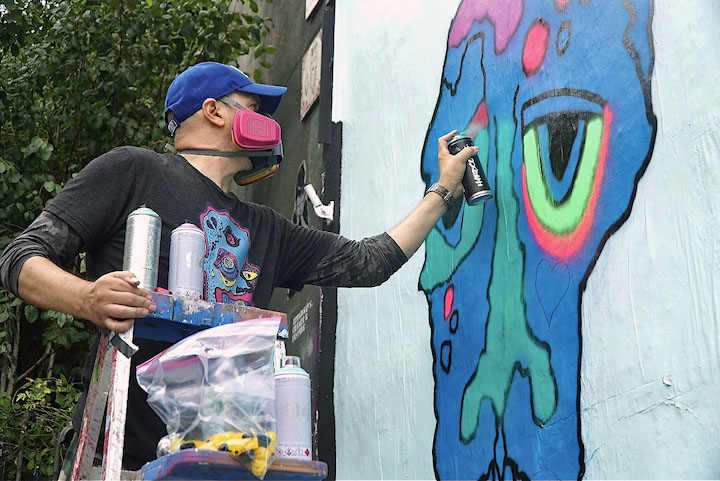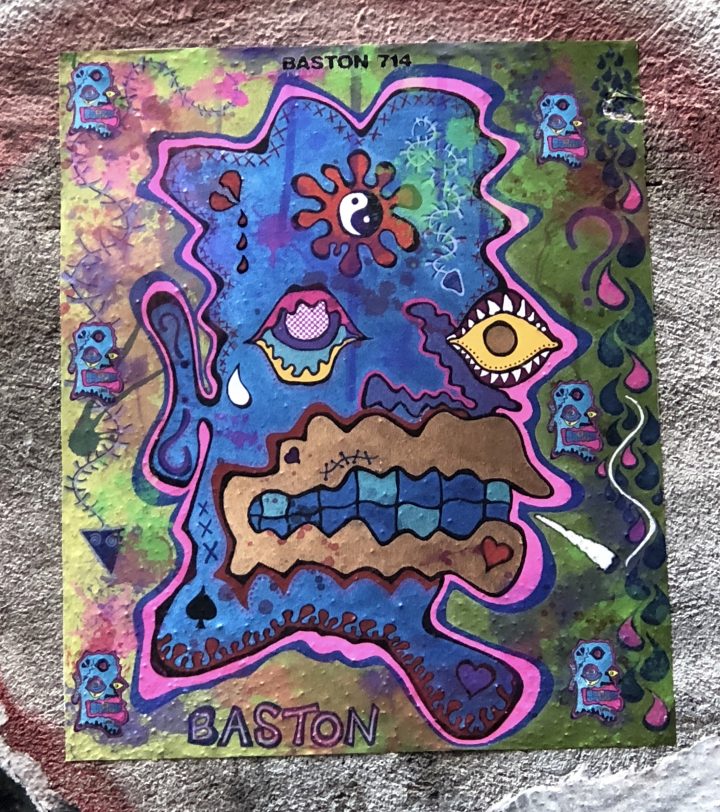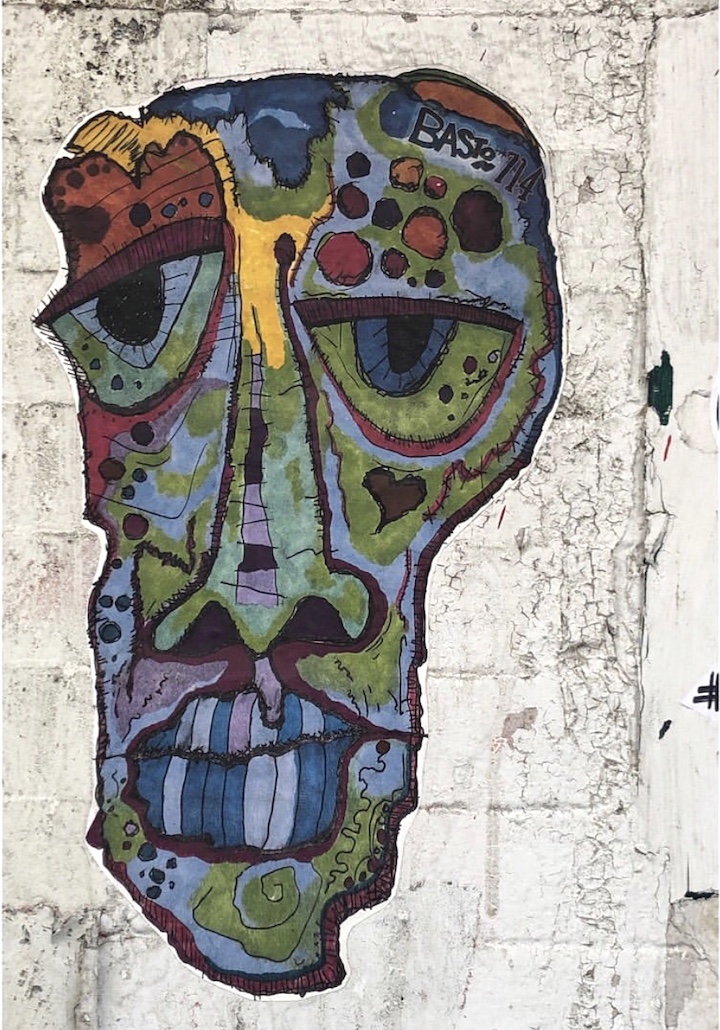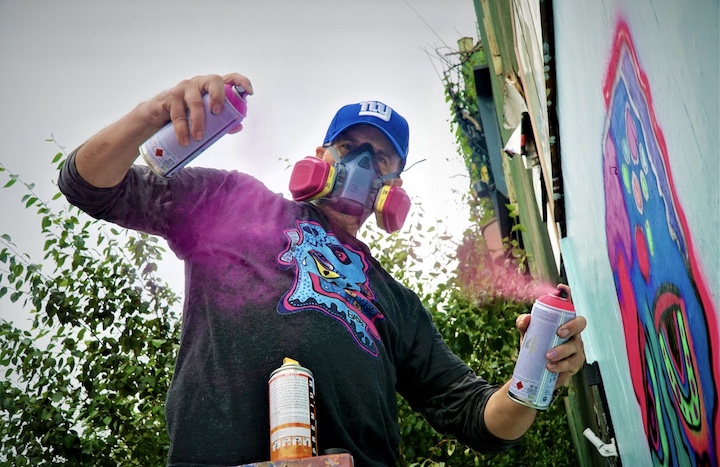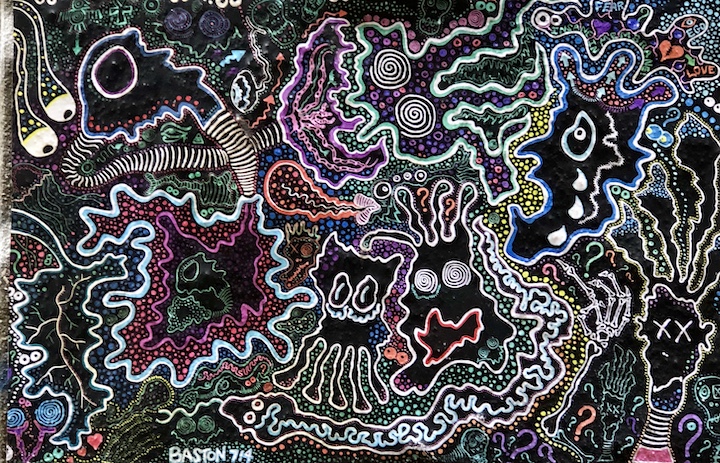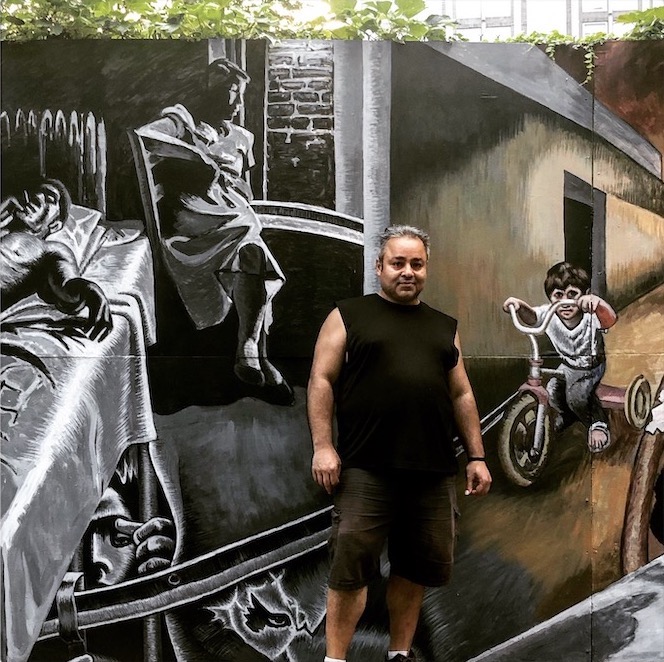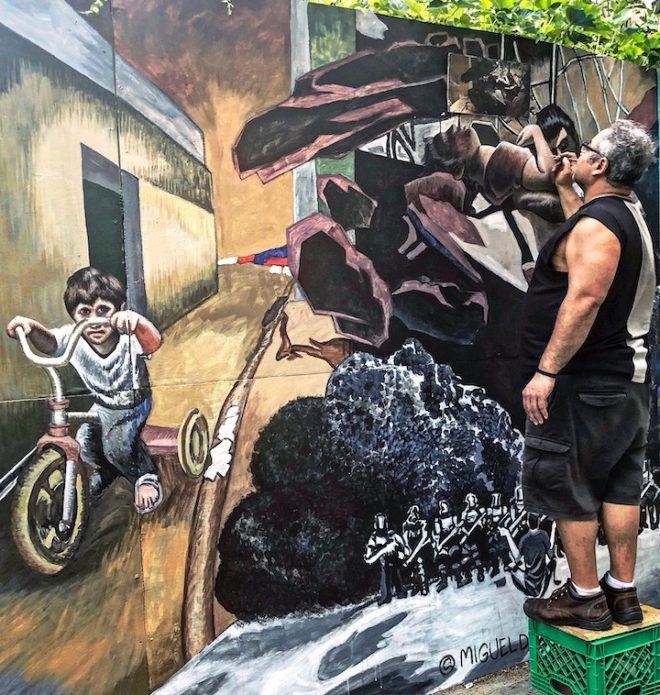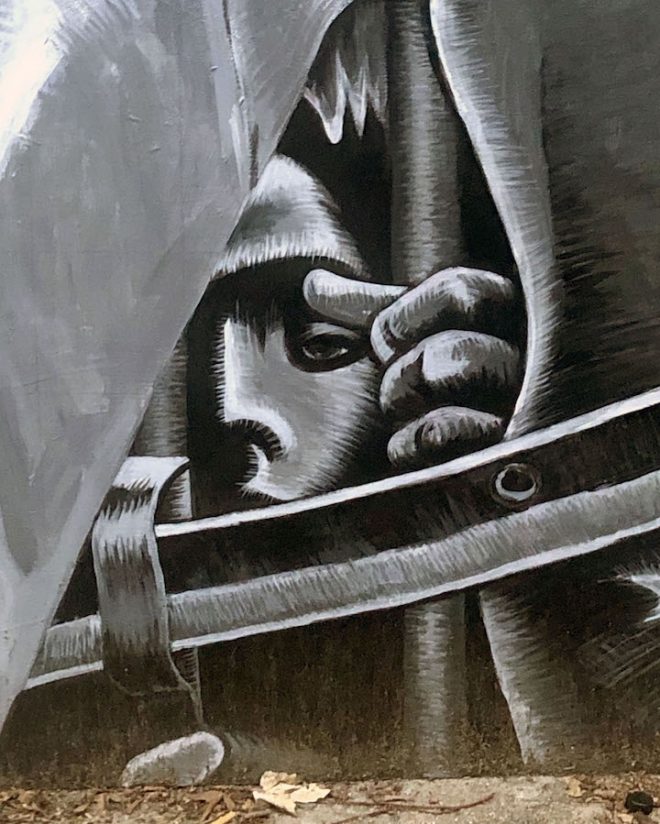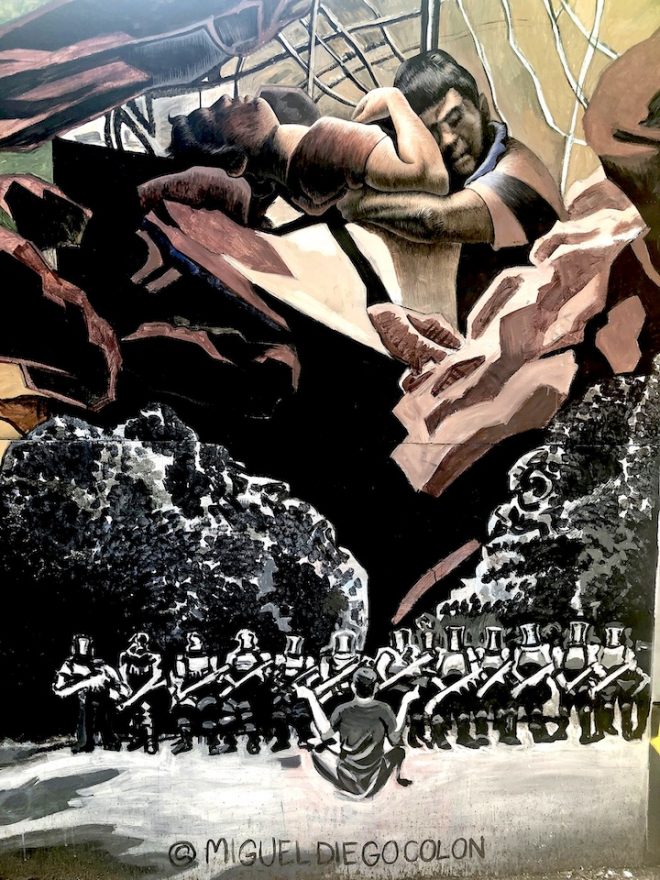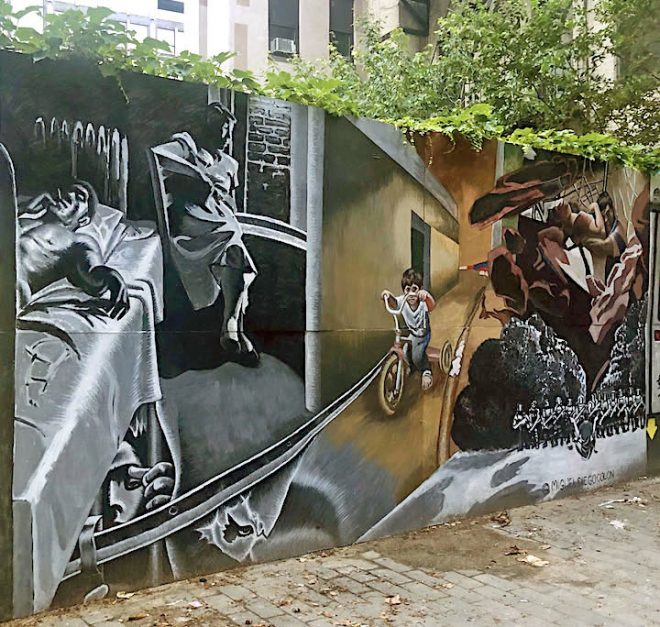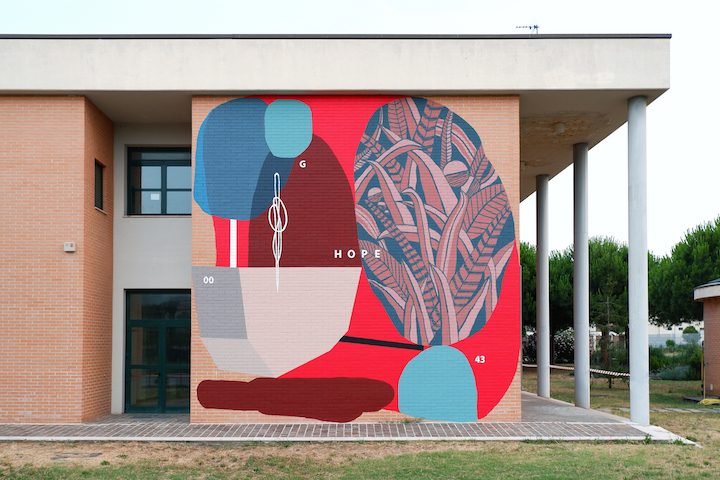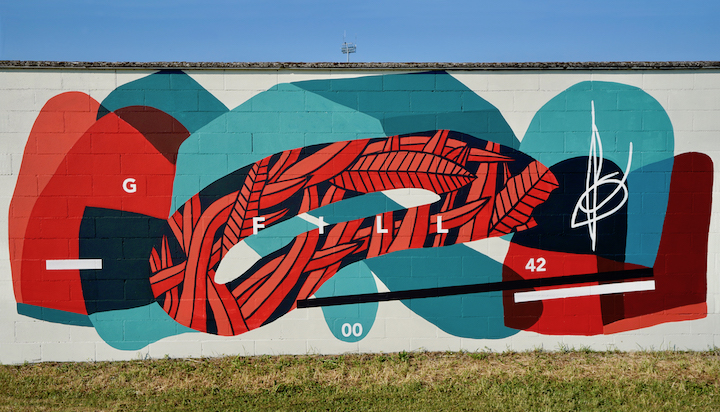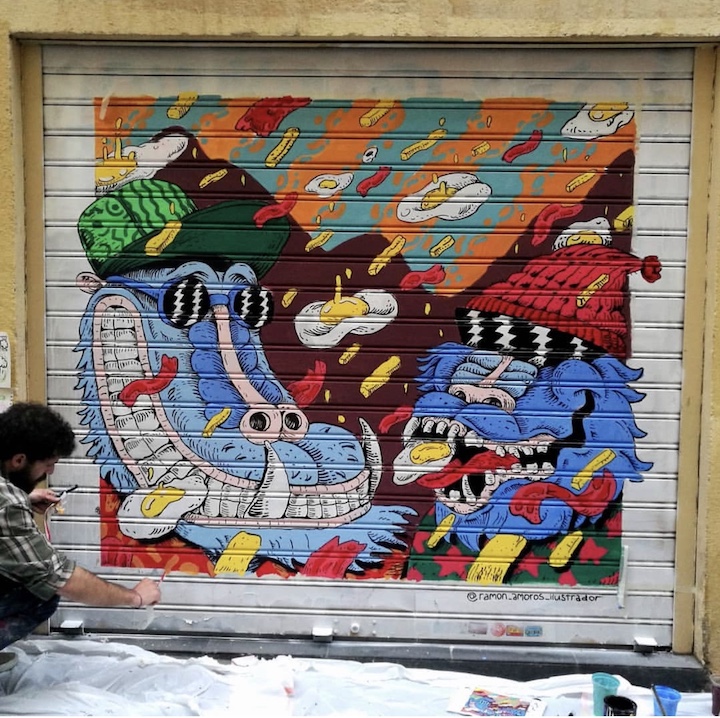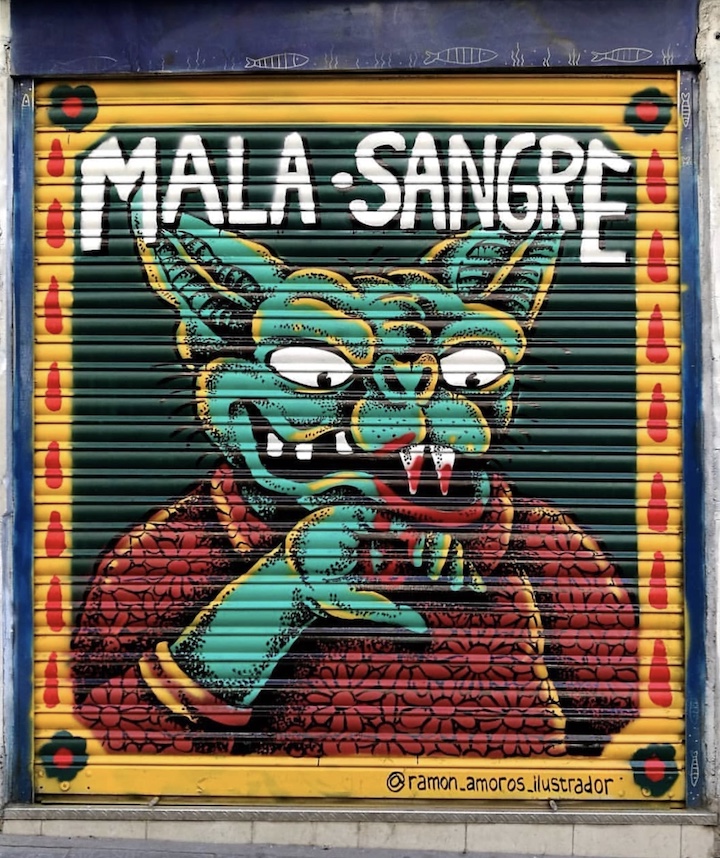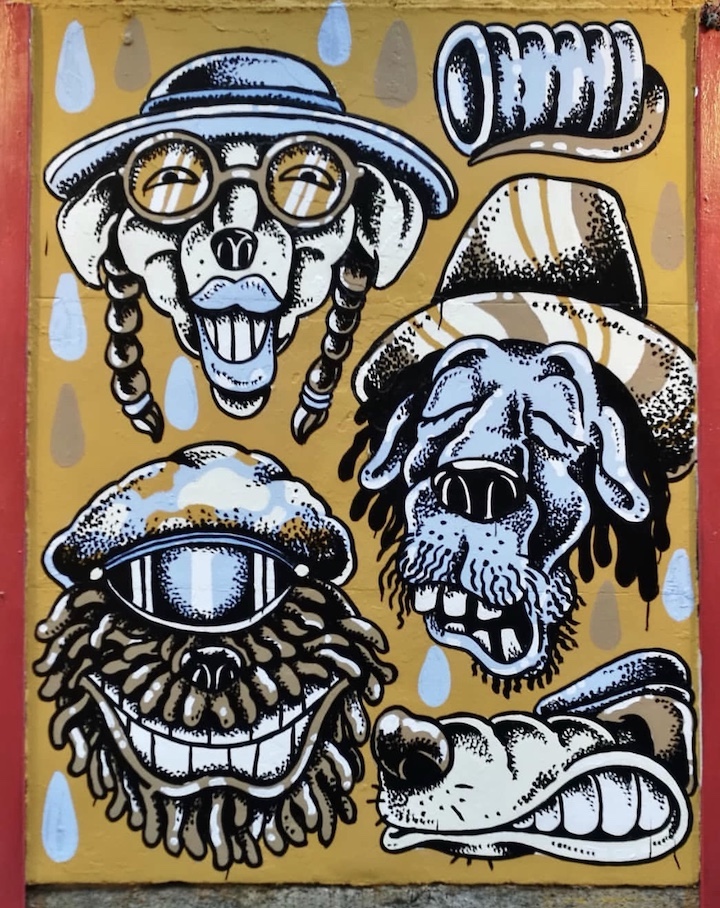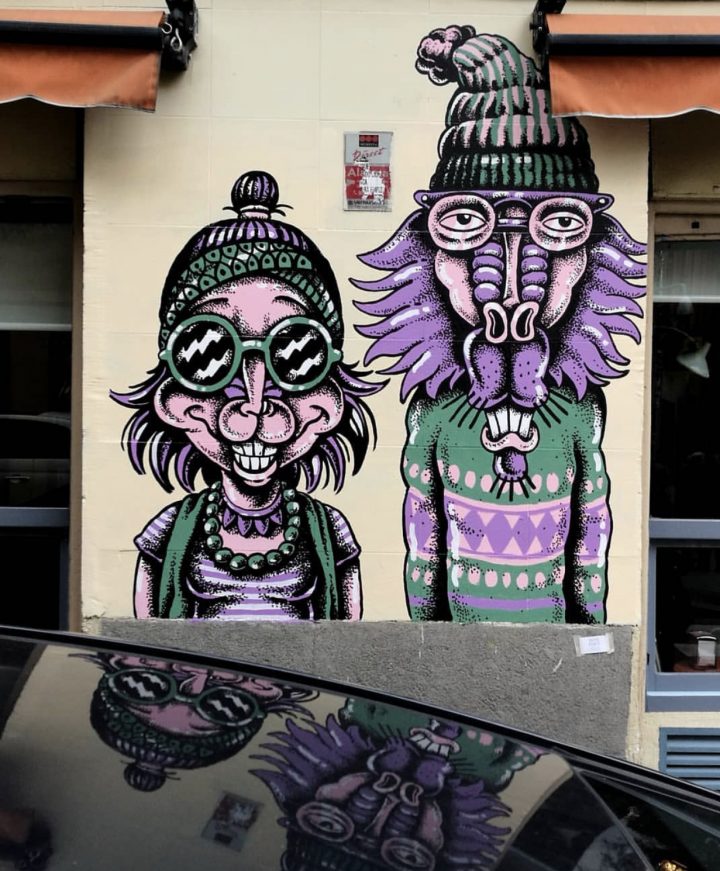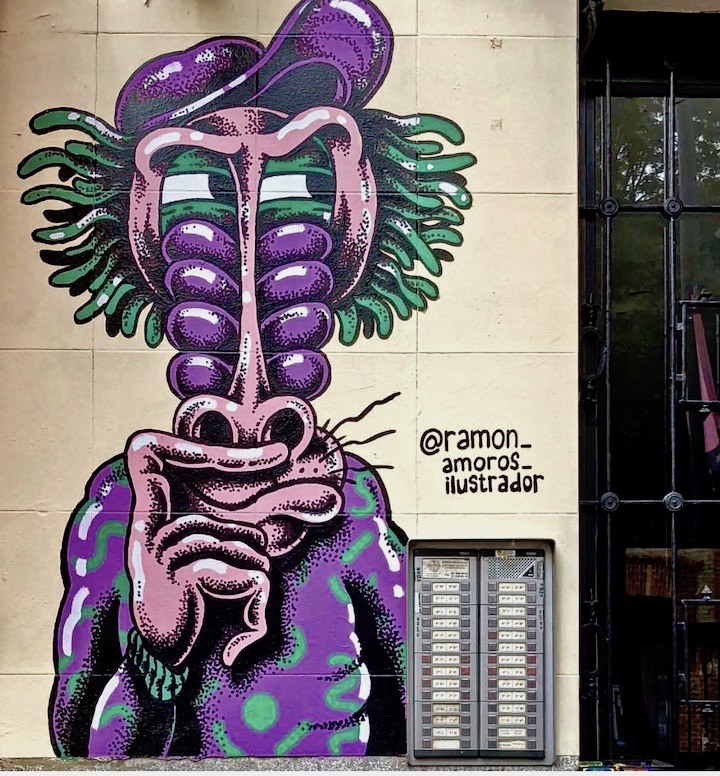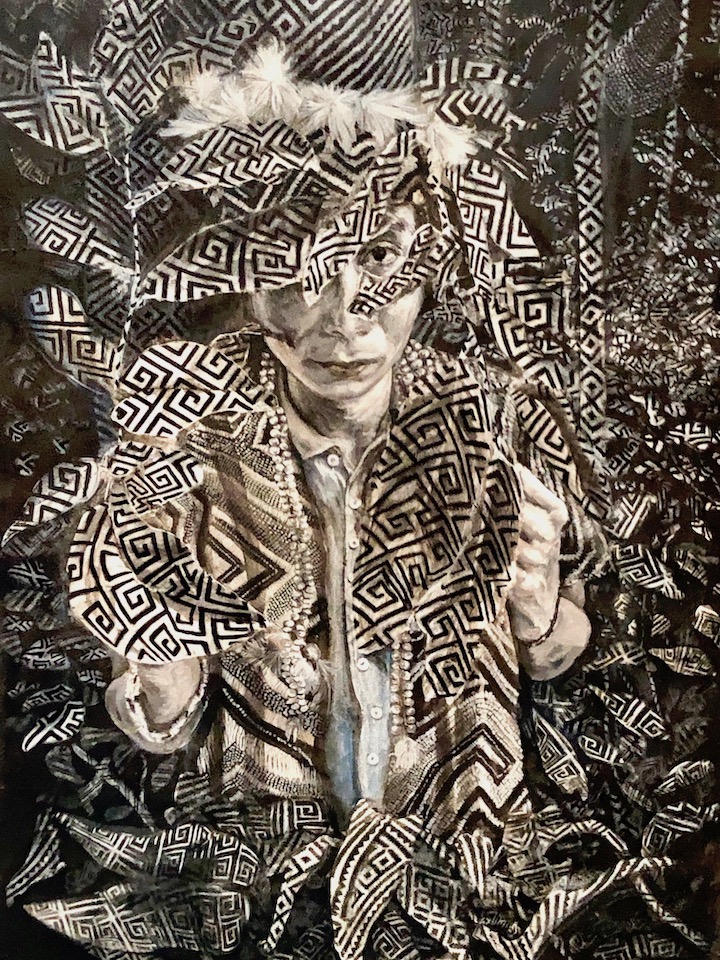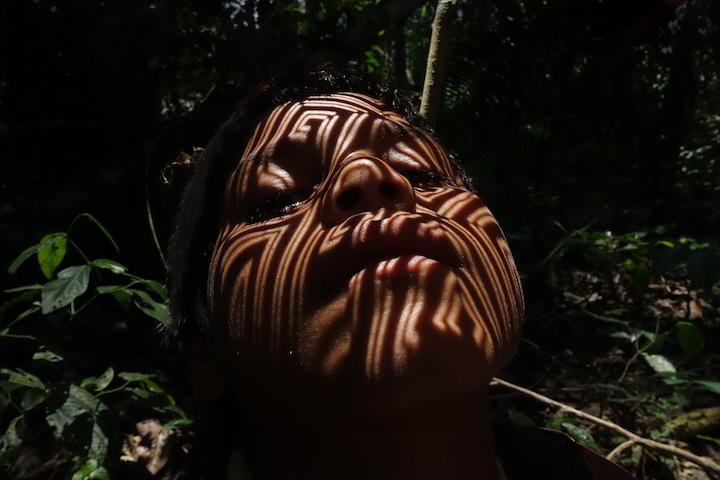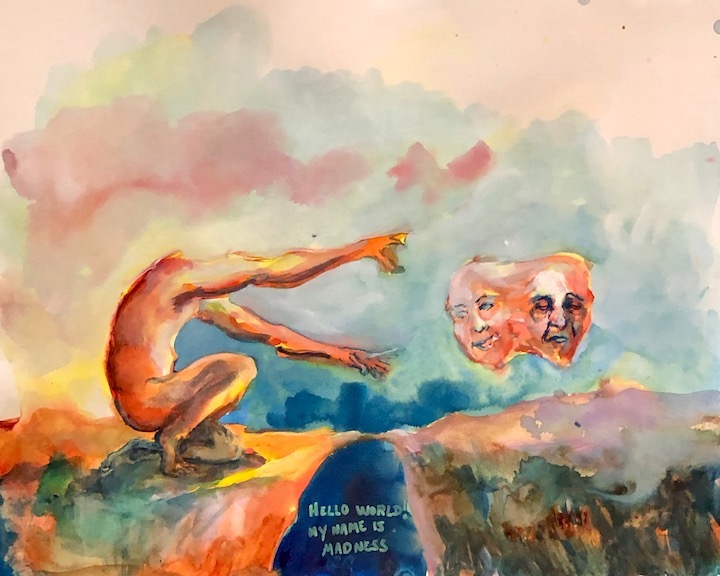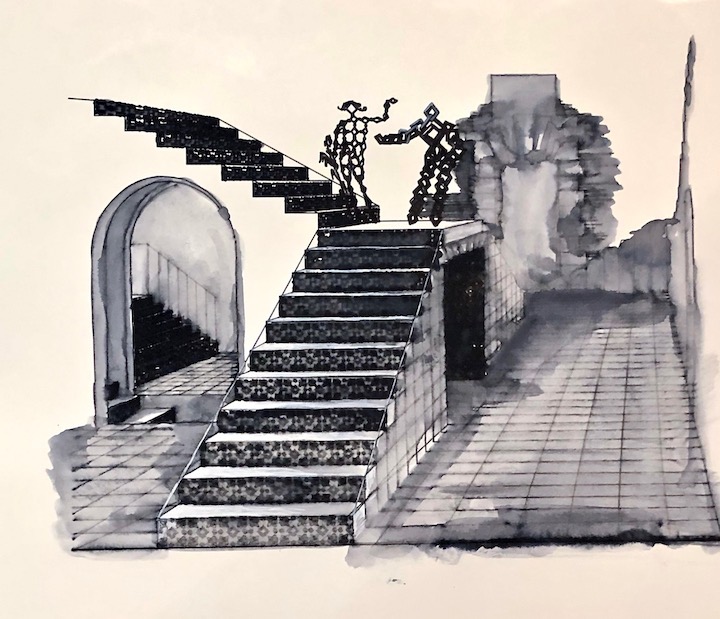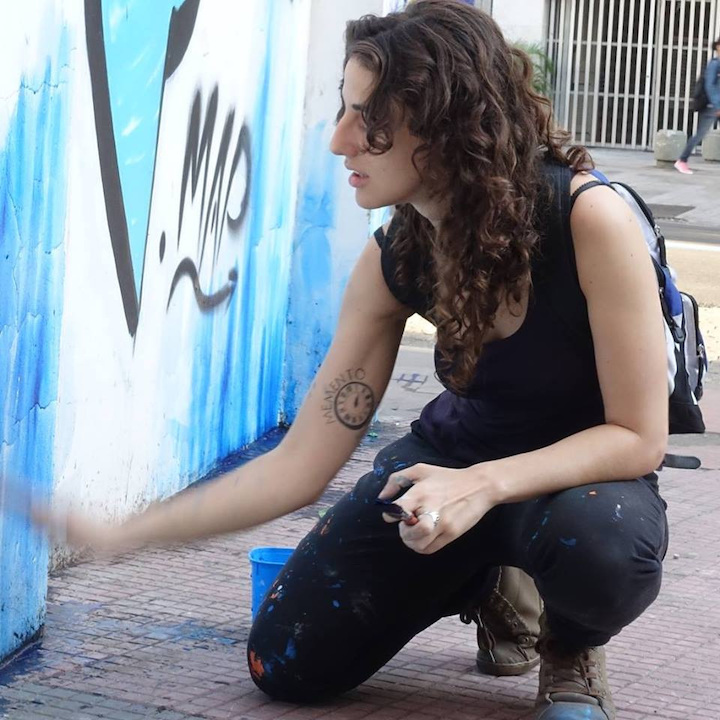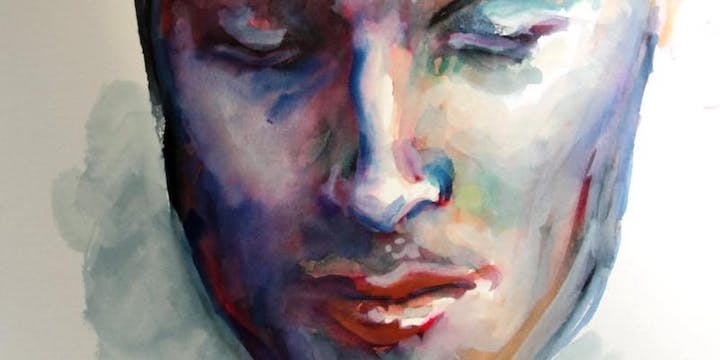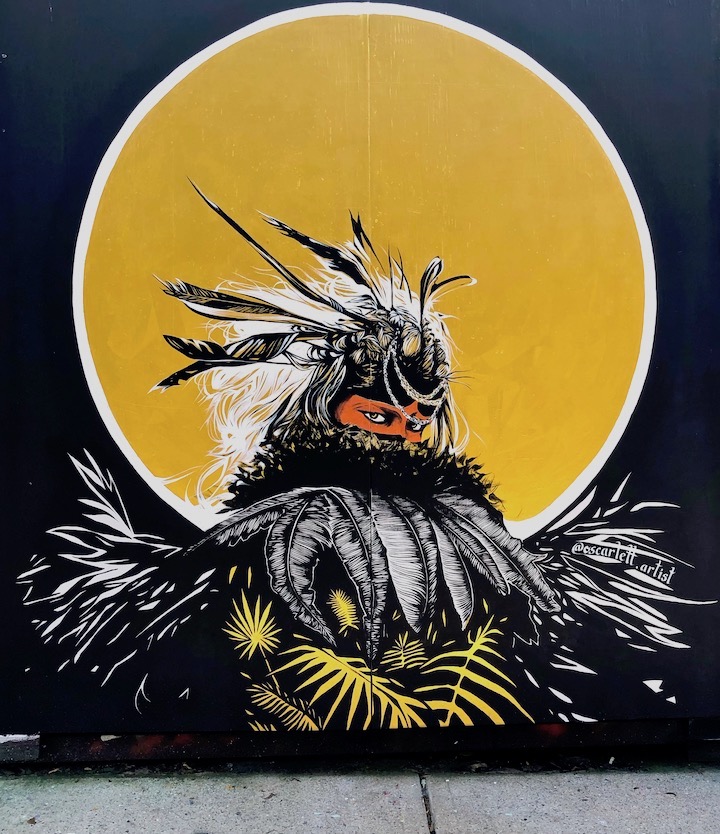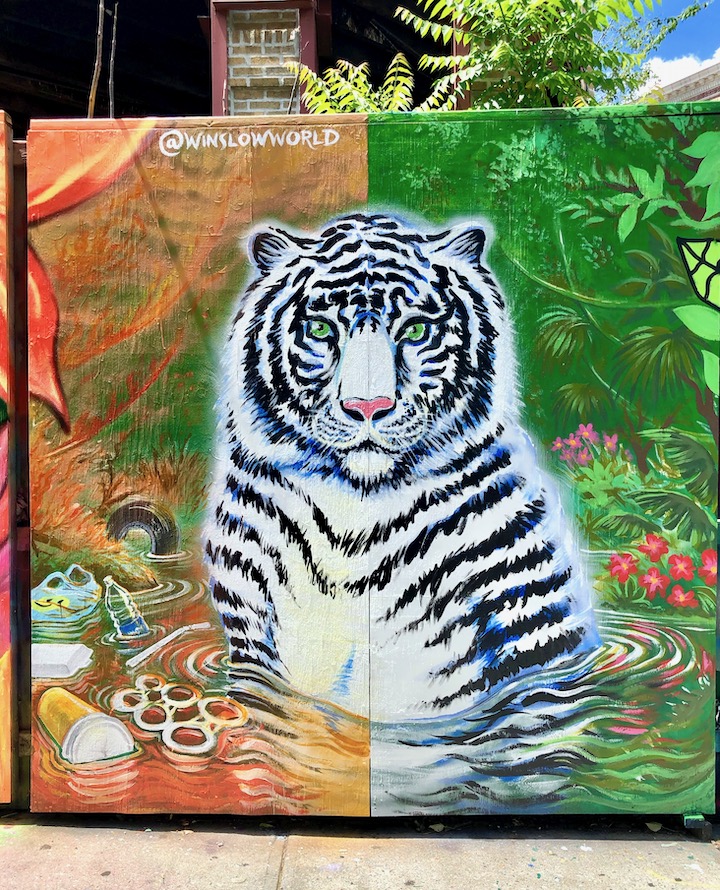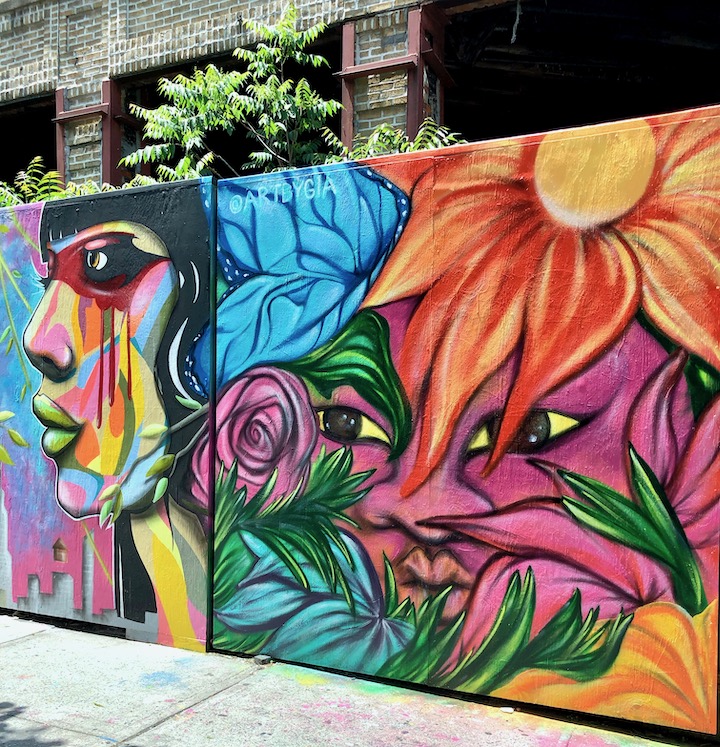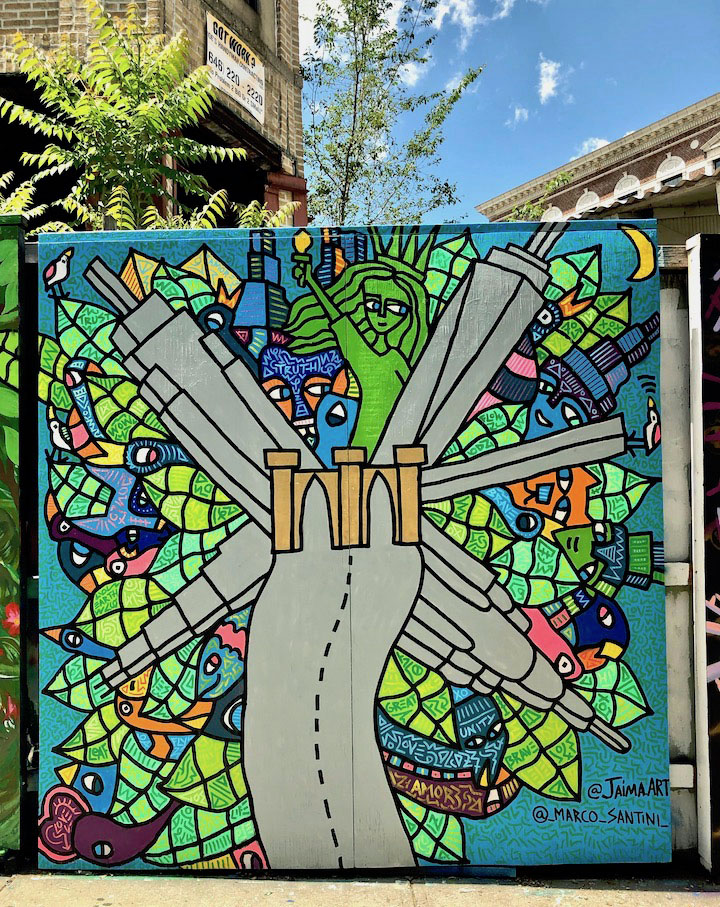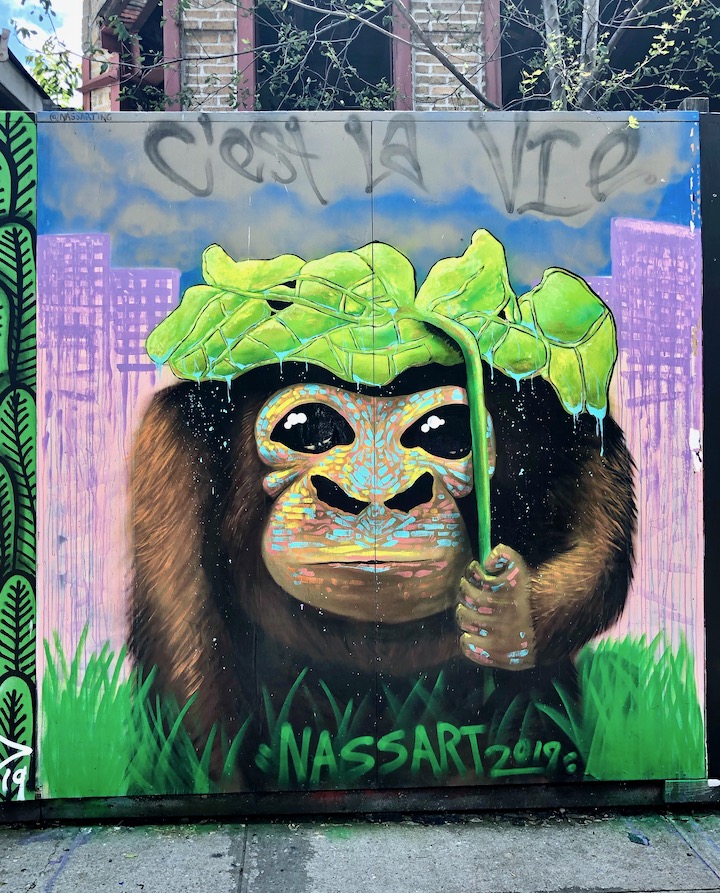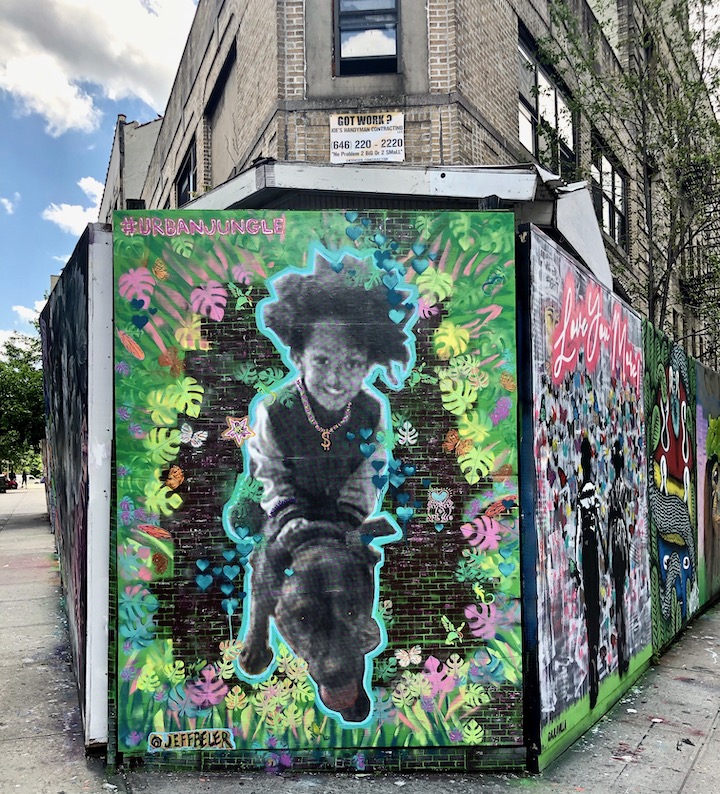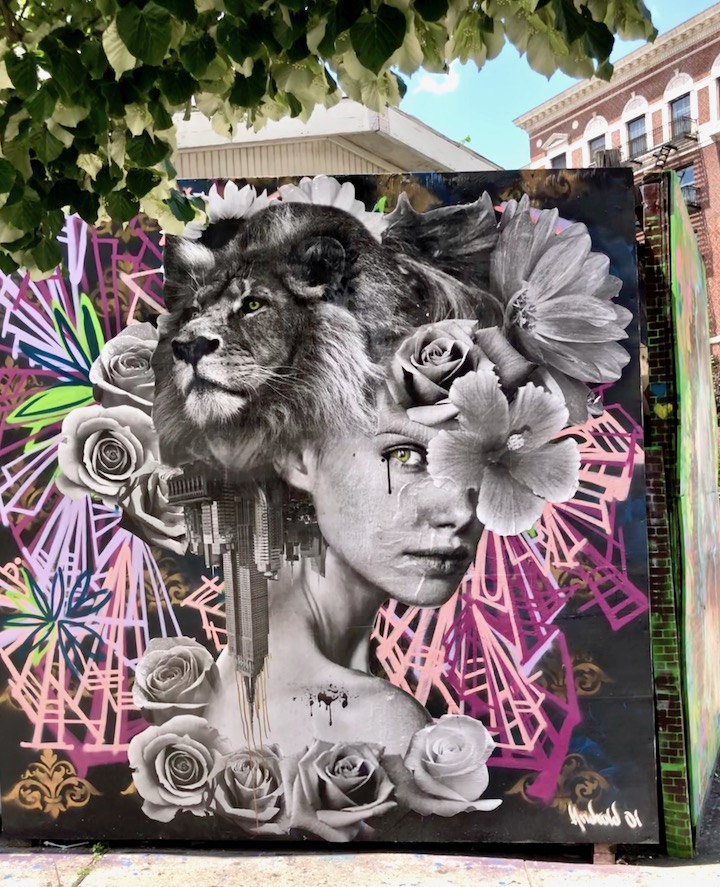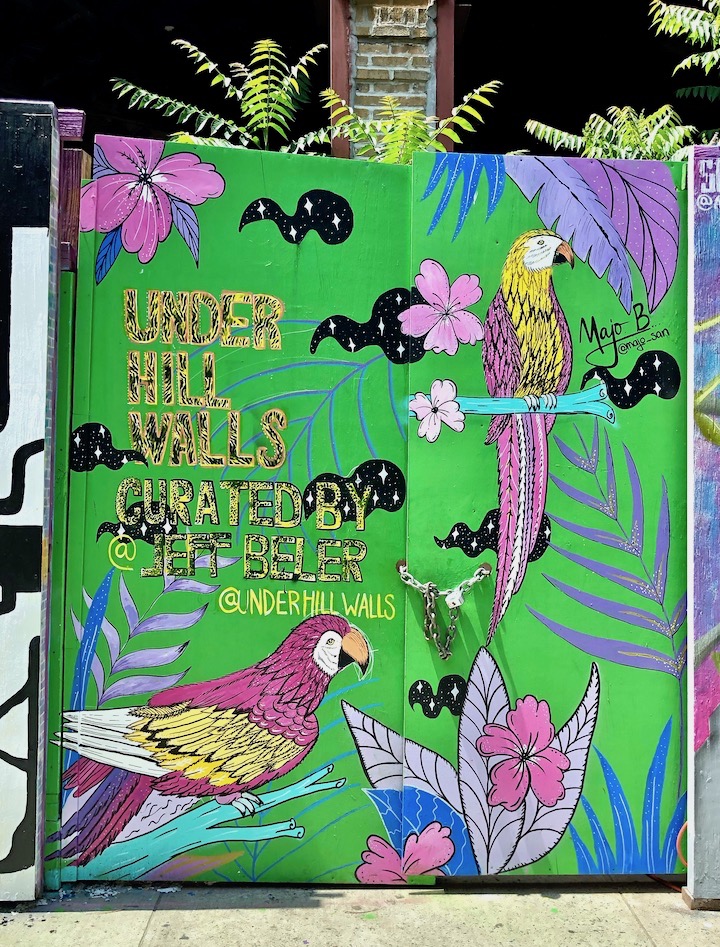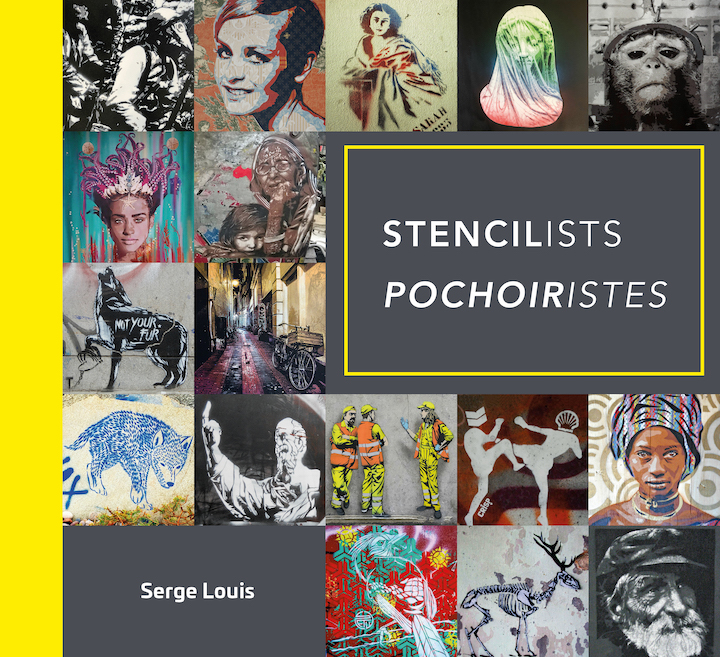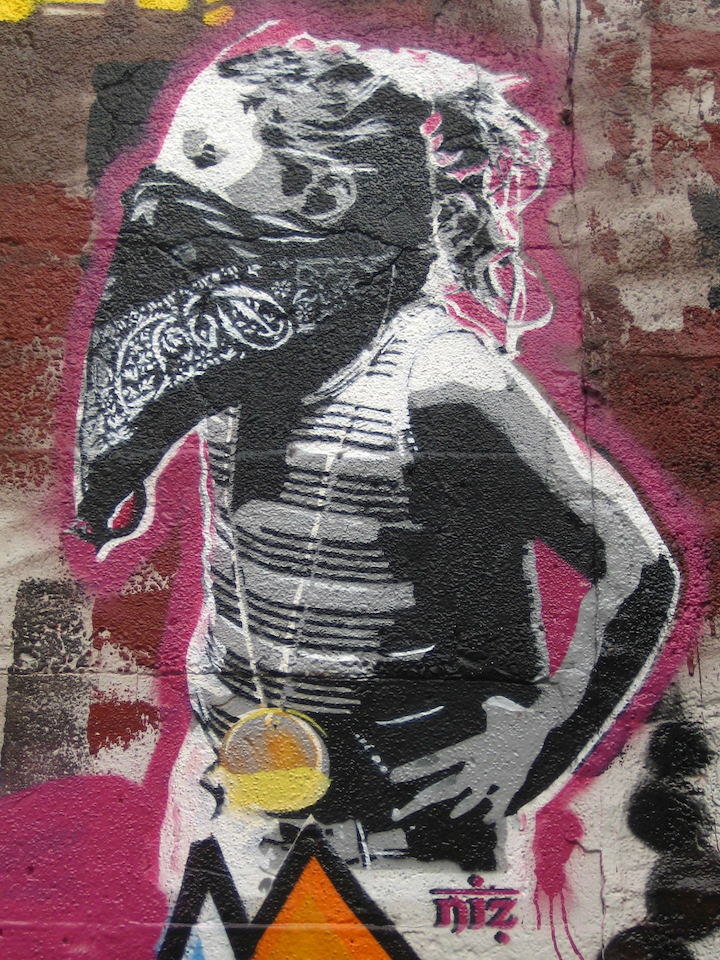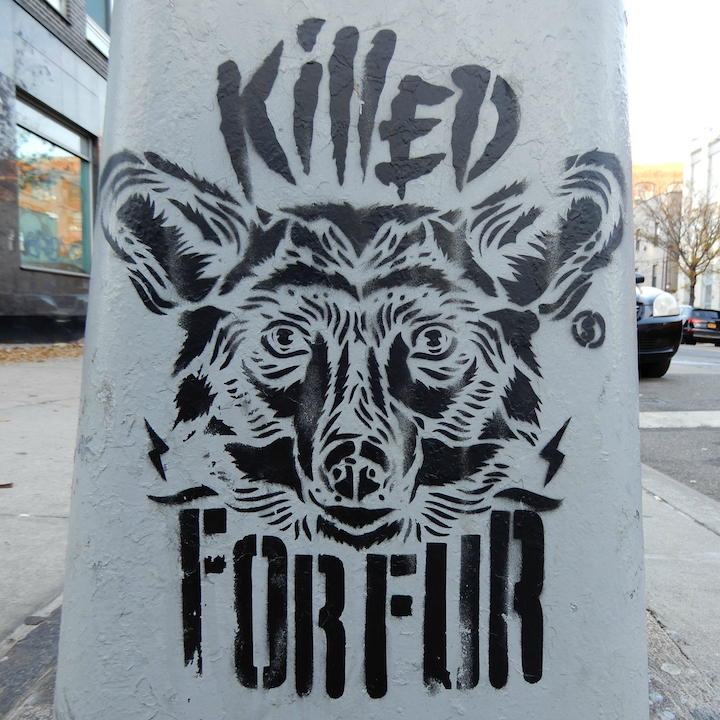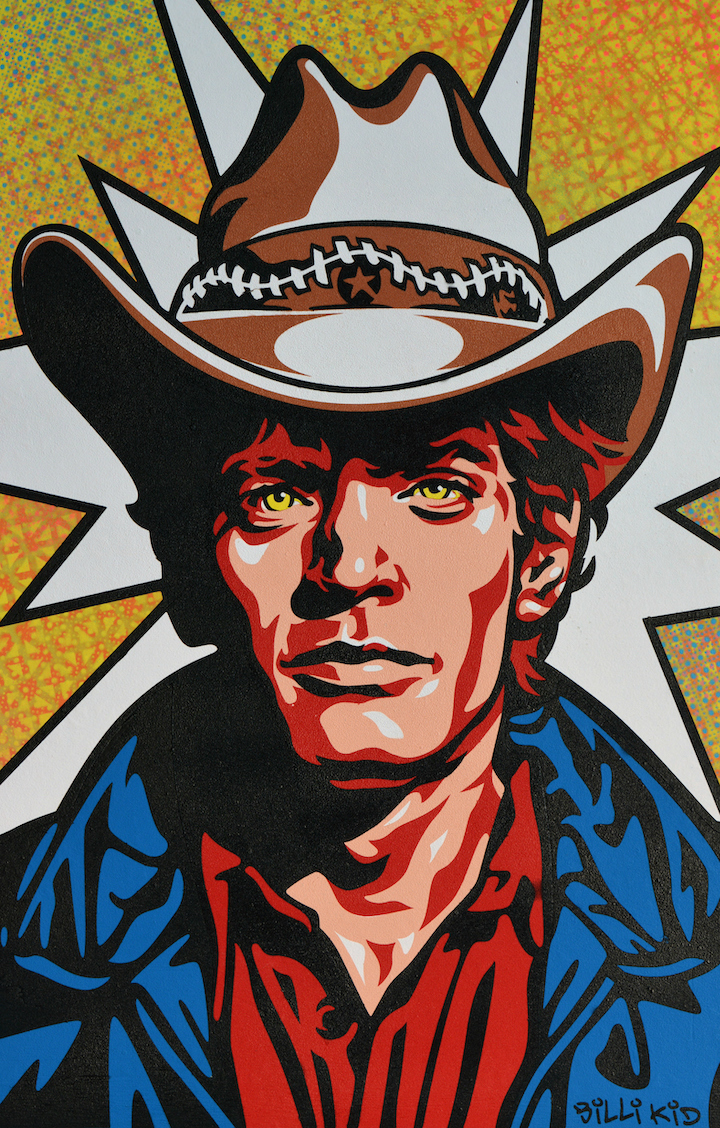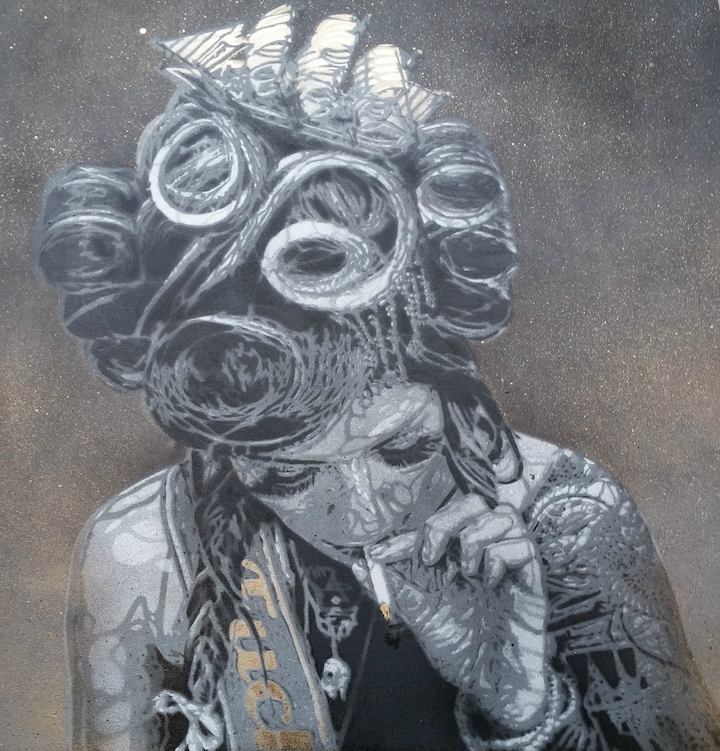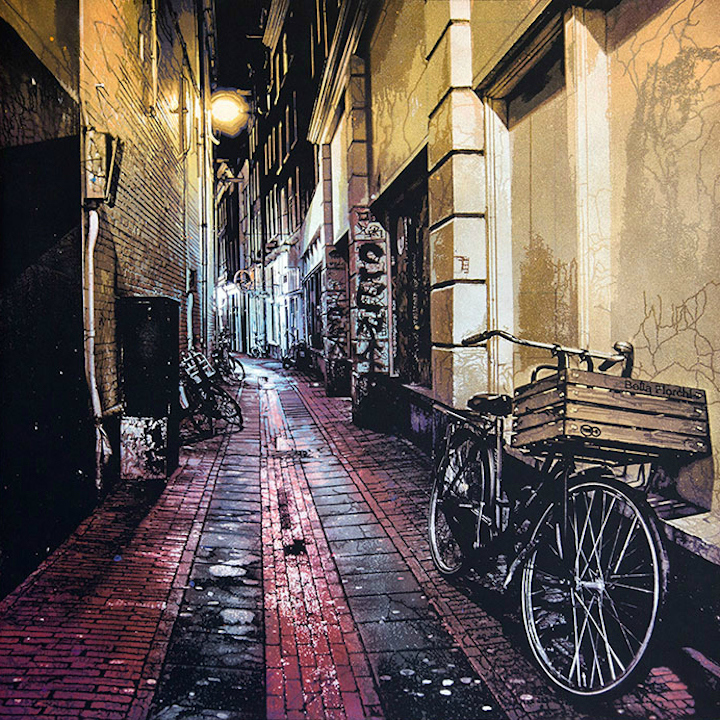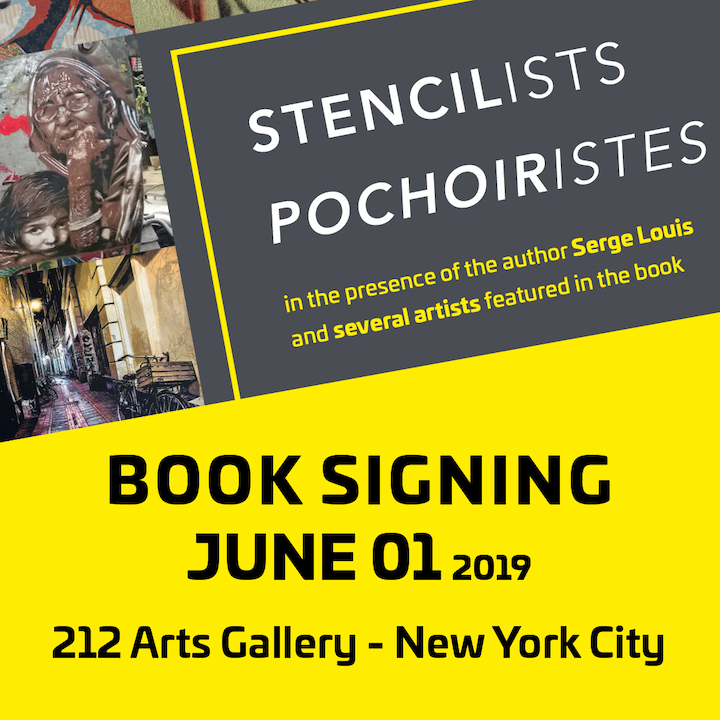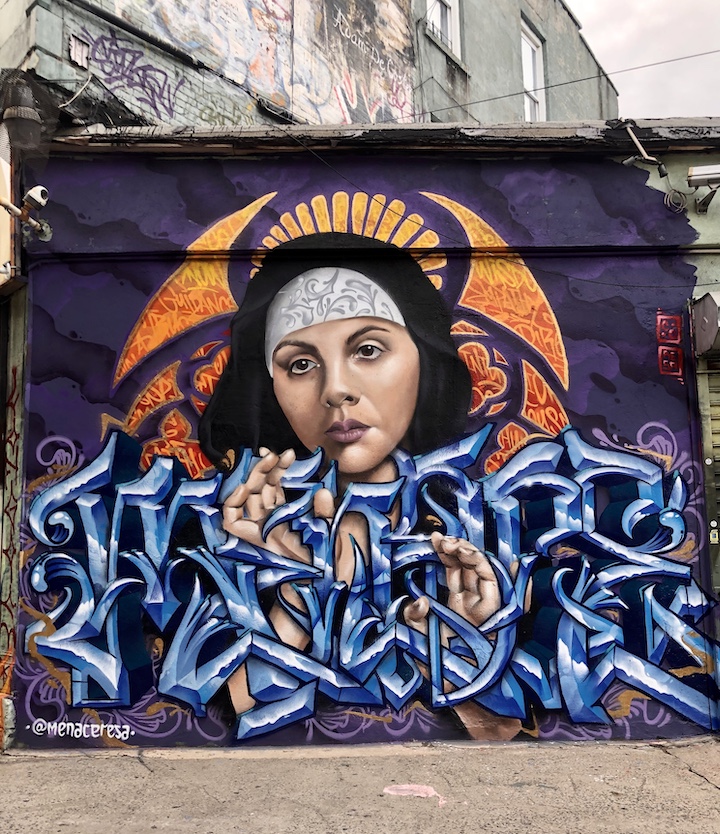
The wonderfully talented Menace Two and Resa Piece have merged their sensibilities and skills to fashion a captivatingly stunning array of murals that have made their way not only throughout NYC, but across the country. I was delighted to have the opportunity meet up with them in their Bushwick home that they’ve aptly titled “Street Art Sanctuary ” — a spacious graffiti/street art haven that Menace and Resa also host as an Airbnb.
When and where did you first get up? And what inspired you to do so?
Resa: I started in 2015. The first wall I ever did was in the Bronx, but I painted mostly in Brooklyn at the time – often in Bushwick. What inspired me to? While I was living in Flushing, I used to regularly ride past 5Pointz on the 7 train. I thought it was all so amazing. I remember thinking, “Why would someone do this?” But it was awhile before I actually did it! The sense that I had something to prove – that a female could create artwork on the same level as any established male artist — also drove me.
Menace: I was in the 7th grade in a local Queens public school. I was always drawing on my desk — anime at the time. One of the kids sitting next to me said I’d be good at graffiti. He introduced me to graffiti, encouraged me and invited me to join his crew, BTC. That was the beginning. I was 12 years old.
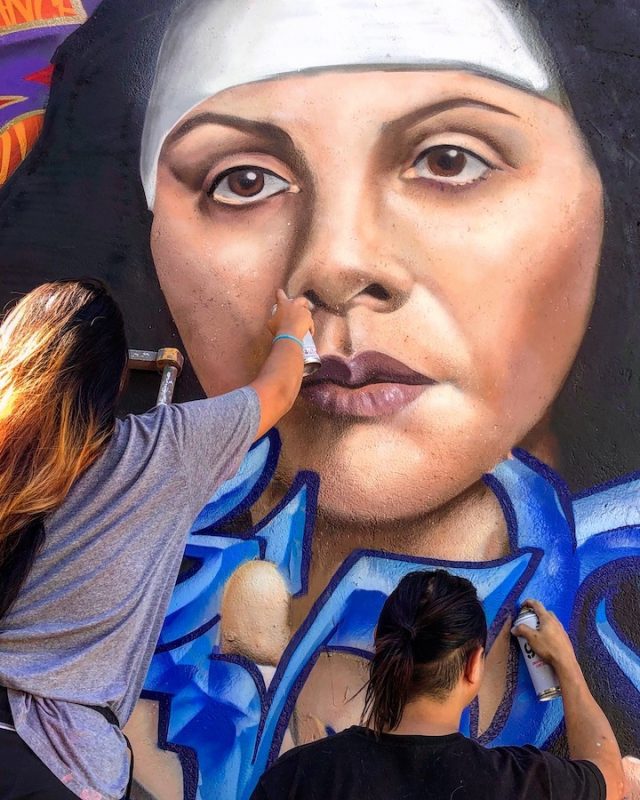
You’ve both painted in both illegal and in sanctioned places. Which do you prefer?
Illegal. Painting “without permission” is far more validating!
Have you exhibited your work in gallery settings?
The streets are our gallery.
What about the increasing engagement of street artists and graffiti writers with the corporate world? Would you consider such a collaboration?
It depends. No one can dictate to us what can or cannot do.

Have you any thoughts about the graffiti/street art divide?
Our job is to bridge it! It’s all about respect.
What is your main source of income?
Painting commissions.
Did you have you a formal art education?
Resa: I did not attend a specialized art college, but at Binghamton, I majored in both Art History and Studio Art. I will always remain grateful to the late Professor George Dugan for his support and encouragement.
Menace: I studied Graphic Design in college, but I never graduated.
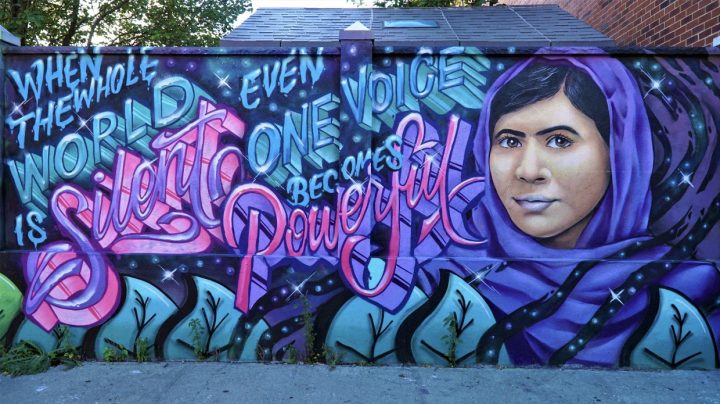
How does your family feel about your passion for art?
Resa: My mom initially fostered it. She enrolled me in art classes when I was eight years old. But then when I wanted to go to an art college, her response was, “You’re too smart to be an artist.” And so she encouraged me to go into the art business. But after interning at Christy’s and working for a collector, I came to understand that the art market is driven by billionaires. I know now that I want to focus on creating my own art and not marketing other artists to the richest 1 per cent. And at this point, my mom understands and respects what I’m doing.
Menace: They intensely disliked my passion for graffiti. I was often getting into graffiti-related trouble in school, and any time my parents saw me writing graffiti, they’d scream at me. They couldn’t understand why I wouldn’t just “draw something pretty.” My father and I fought just about every day. But my parents have since come to accept me. It helped that in honor of our mothers we painted a mural featuring a tiger mom embracing her cub for the Boogie Down event at the Bronx Zoo for Mothers Day, 2018.
When you paint in public spaces, do you work with a sketch-in-hand or just let it flow?
We generally work with Photoshop mock-ups.
Are you generally satisfied with your finished piece?
Generally, we are.
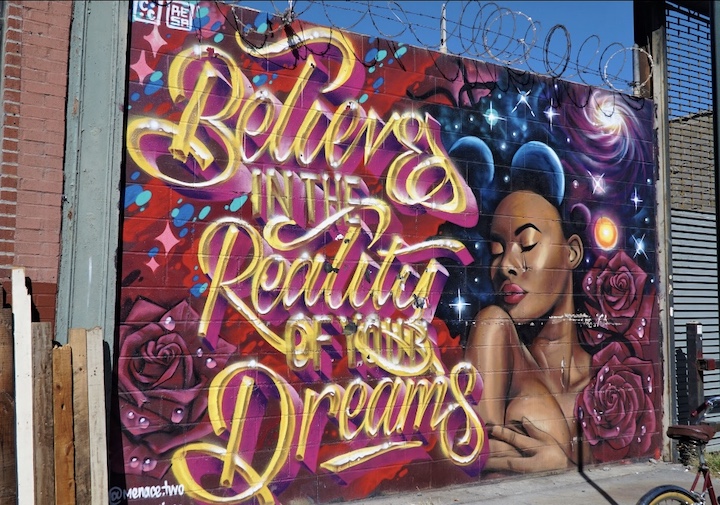
What percentage of your time is devoted to art?
100 %.
Have you any other interests or passions?
Resa: Not many.
Menace: Video games.
Are there any particular cultures that have inspired your aesthetic?
Hip-hop and New York flavor, in general.
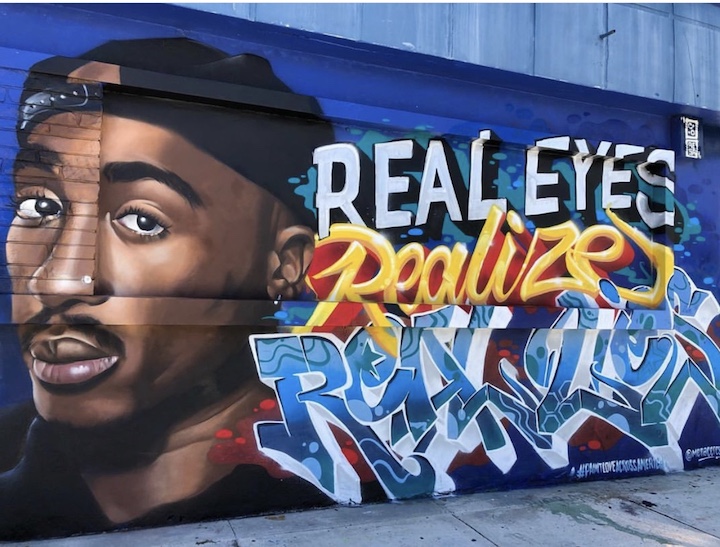
Who are some of your favorite artists? Artists who have inspired you?
Resa: There are so many – BK Foxx, Royyal Dog, El Mac, Meres, Jerms, Topaz, Seen, Skeme…
Menace:Reach Eight, Glossblack, Revok, Saber, MSK…
How has your work evolved in recent years?
It’s gotten much better. While touring the country, we felt we had to prove something at each stop!
In your cross-country venture — #paintloveacrossamerica — you hit several key cities from Philly to LA painting a range of spectacular murals — some with permission and others without. Does any particular memory stand out?
When we had reached LA, we asked an established street art organization to help us find a legal wall. When assistance didn’t come our way, we found — on our own — one of the largest walls in the heart of the LA arts district. When the cops rolled up, we didn’t know what to expect, but they expressed appreciation for our work. And when the owner came by, we convinced him that we are in the process of beautifying his property. The final mural — one of our favorite ones — is a visual representation of our collective prayers.
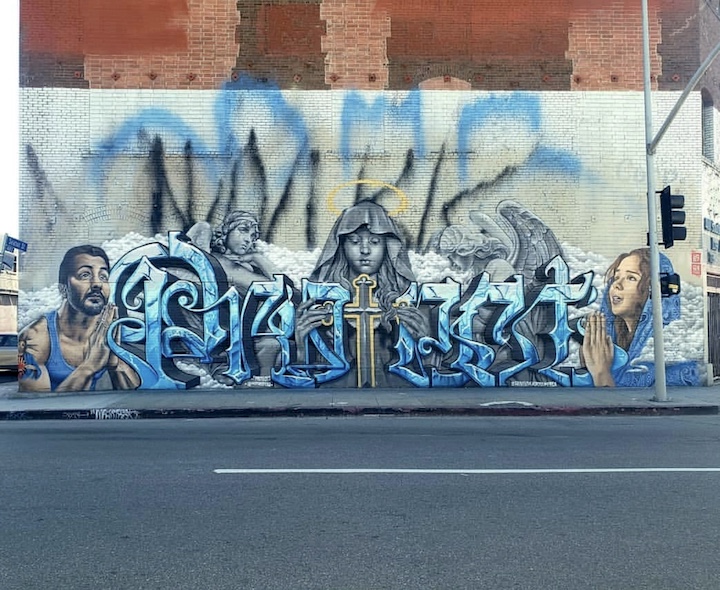
No doubt that what hat you painted was a gift — however ephemeral — to the city! What’s ahead?
More painting, of course! And our ultimate goal is to create a community center that serves as a base for us to teach painting and mural-making skills to others.
That sounds wonderful! And thanks for sharing your talents and visions with so many of us.
Images:
1 “Madonna Menace” in Bushwick, JMZ Walls
2 Close-up of Resa and Menace captured at work in Bushwick, JMZ Walls
3 “What a Wonderful World,” portrait of Louis Armstrong, in Esst Harlem, GrandScale Mural Project
4 “When the whole world is silent/Even one voice becomes powerful,” portrait of Malala in Bushwick
5 “Believe in the Reality of Your Dreams,” in Bushwick
6 “Real Eyes Realize Real Lies,” portrait of Tupac in Wynwood
7 “Protect,” Unsanctioned mural in LA’s arts district
Interview conducted and edited by Lois Stavsky
Photo credits: 1-3 Lois Stavsky; 4 & 5 Ana Candelaria; 6 & 7 Courtesy of Menace and Resa
{ 1 comment }
